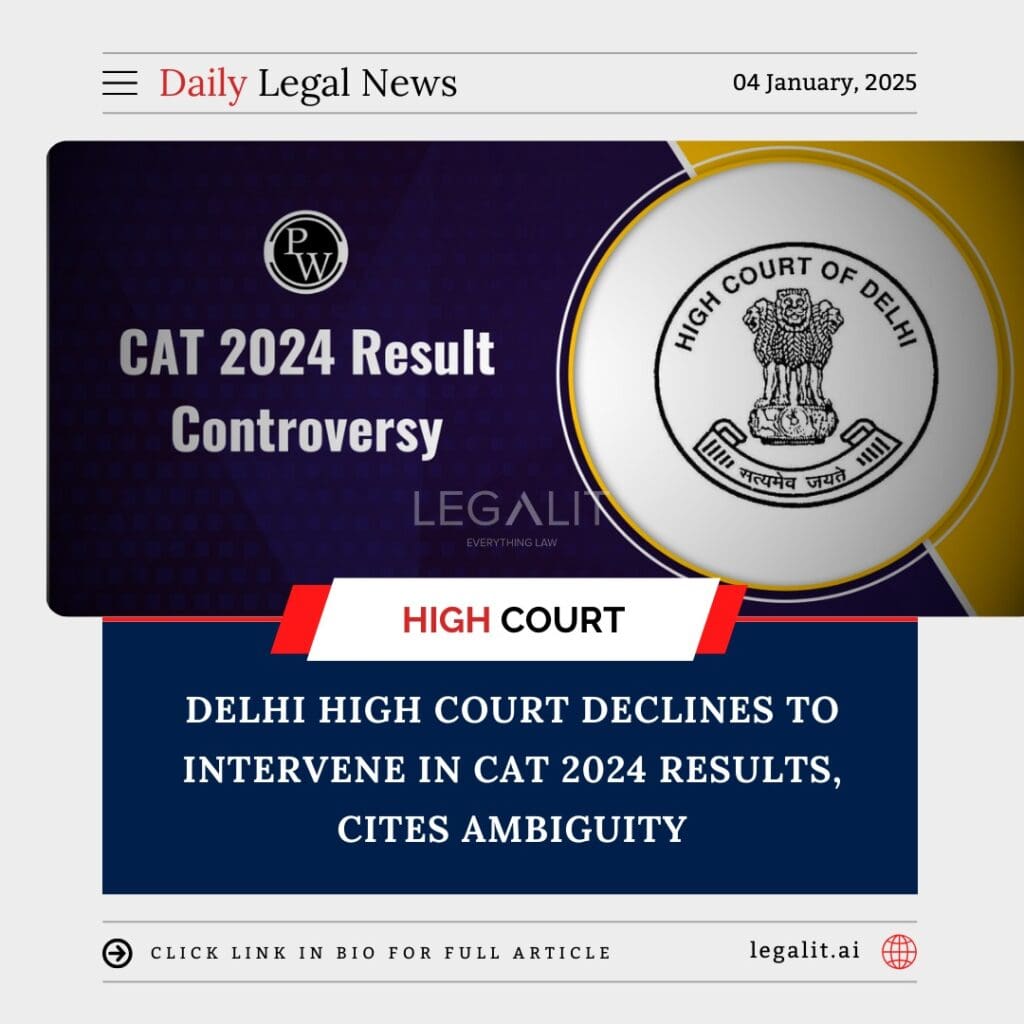
The Delhi High Court has refused to entertain a plea challenging the results of the Common Admission Test (CAT) 2024, emphasizing the limited scope for judicial interference in cases involving ambiguity or “grey areas.” The court underscored its reluctance to step into academic matters unless there is clear evidence of illegality or arbitrariness.
Background
The petitioners, CAT aspirants, approached the High Court alleging discrepancies in the examination’s scoring process and evaluation. They claimed that inconsistencies in the normalization process and lack of transparency in result publication adversely affected their rankings, putting their admissions to top-tier management institutes at risk.
CAT, conducted annually, serves as the gateway to premier Indian Institutes of Management (IIMs) and other top business schools in India. The examination employs a normalization process to equate scores across multiple shifts, a mechanism that often becomes contentious.
Court’s Observations
- Role of Courts in Academic Matters:
Justice Subramaniam, delivering the judgment, stated, “In academic matters, courts must exercise restraint unless there is a glaring illegality or violation of statutory provisions. A grey area or differing interpretations cannot form the basis for judicial interference.” - Normalization and Transparency:
The court acknowledged the petitioners’ concerns about normalization but held that the process is complex and within the purview of the conducting authority. The court found no evidence of arbitrariness or mala fide intent in the results. - Scope for Redressal:
The bench suggested that aggrieved candidates could raise their grievances with the examination authority or regulatory body overseeing CAT, as these forums are better suited to address technical disputes.
Existing Framework and Challenges
CAT uses a scientifically designed normalization process to ensure fairness across multiple shifts. While intended to address variations in difficulty levels, this method often sparks debates over its transparency and reliability.
- Transparency Concerns: Candidates frequently demand detailed scorecards and insight into how normalization affects their results.
- Limited Redressal Mechanisms: With no statutory appellate mechanism, candidates often resort to judicial interventions, putting courts in a challenging position.
Implications of the Ruling
- Judicial Restraint: The decision reaffirms the judiciary’s hands-off approach in academic disputes, emphasizing the autonomy of examination bodies.
- Call for Reforms: The ruling highlights the need for greater transparency in competitive exams like CAT to reduce litigation and enhance trust among candidates.
Conclusion
The Delhi High Court’s decision not to intervene in the CAT 2024 results underscores the judiciary’s deference to academic authorities in matters involving technical ambiguity. The judgment reinforces the need for robust internal mechanisms within examination bodies to address grievances and ensure transparency, reducing dependency on judicial recourse.